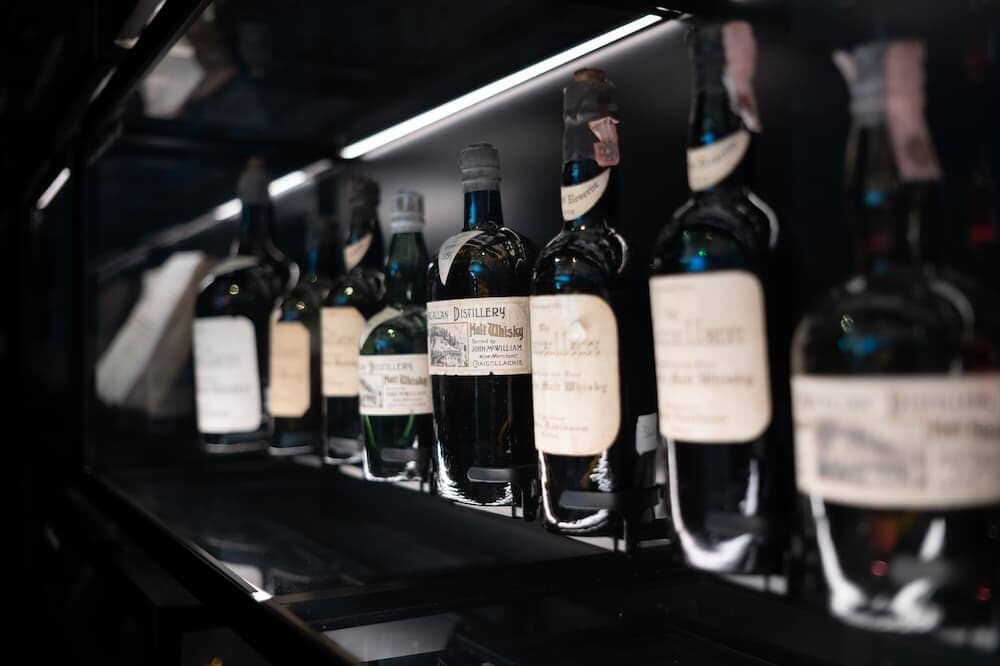Non-alcoholic wine is still wine, and needs to be stored in the right environment. If you don’t consider certain factors such as temperature, sunlight, and humidity, then your alcohol-free wine could end up tasting bad.
More and more people are participating in Dry January, which involves going a whole month without consuming alcohol.
Alcohol-free wine should taste very similar to regular wine as there’s only one missing ingredient - ethanol. But how do you store it?
Keep reading to learn more about alcohol-free wine and how you should store it.
What Is Dry January?
If you’ve heard about Dry January this year and plan on participating next year, or if you’re halfway through this year’s Dry January, then it’s important that you know more about the campaign.
Dry January is a campaign that’s run by the charity Alcohol Change UK, and has been occurring every year since 2013.
The campaign is all about encouraging people to think more about their relationship with alcohol and to highlight the issues that we may have with alcohol dependency - especially following the pandemic.
Every year, more people participate in Dry January, setting themselves the challenge to abstain from alcohol throughout the month of January.
Starting the year alcohol-free can set the tone for the rest of the year, and encourage you to think more carefully about how often you drink for the rest of the year. The initiative has been known for its health benefits - for example, reducing the risk of diabetes, lowering blood pressure, lowering cholesterol, as well as reducing the risk of blood cancer.
Thankfully, if you’re on a no-alcohol diet or you’re participating in Dry January, then you can find quality alcohol-free wines that taste just as great as regular wine.
Alcohol-free wine is simply wine that has very little or no alcohol content. You can still appreciate the nuanced flavours and textures of wine, without worrying about your alcohol consumption.
However, when shopping for alcohol-free wine, be sure to check for the terms ‘alcohol-removed’ or ‘de-alcoholisation’. This means that it’s actually wine that doesn’t contain alcohol, as opposed to just grape juice.
How Do I Store Non-Alcoholic Wines?
Just like any wine, alcohol-free wines should be stored in the right way. Whether you choose a wine cooler, a wine cabinet, or a wine cellar - you should ensure that the environment is the right temperature, is protected from sunlight (specifically UV rays), and has the right humidity levels.
If you’re storing your non-alcoholic wine in the longer term, then you can store your whites and reds together at the same temperature - around 11-14°C should be fine. You should also ensure that the humidity levels are in the range of 50% to 70%. This is to ensure the cork remains moist and in place, and the labels don’t accumulate moisture.
However, in the shorter term, reds and whites are best kept at different temperatures as they have different serving temperatures. White wine is usually best served at around 7°–12°C, and red wine is usually best served at 12˚C-18˚C.
You should store your alcohol-free wine the same way you store your regular wine - after all, they still have the same flavour profiles and key ingredients. The only thing missing is the ethanol.
If you’re only storing alcohol-free wines for Dry January or you prefer a mixture of non-alcoholic and regular wine, then you’ll be glad to know that you can store your alcohol-free wines in the same place as your regular wines.
Wine Cooler
A wine cooler/ a wine fridge is probably the best option for storing your alcohol-free wines - especially in the short term.
A wine cooler is a unit that not only regulates the temperature of your wine collection, but regulates the humidity levels, protects your wine from sunlight, and can also minimise vibrations.
You can find wine coolers with all kinds of features - some have locks, some have door alarms, some feature LED lighting, and others have display shelves or adjustable shelves. You can also find wine coolers with single temperature zones, dual-temperature zones, and multiple temperature zones.
Wine coolers come in three designs - freestanding, built-in, and fully integrated. Each has its own ventilation requirements. For example, freestanding units need a few inches of space around the rear and sides to allow optimal airflow, as well as around 12 inches on top of the unit. This is because the vents are located at the rear of the unit.
Built-in and fully integrated wine coolers won’t need as much space as they’re designed to fit into small spaces, but installation instructions should still always be followed to avoid voiding the warranty, overheating the unit or damaging the unit.
Wine Cabinet
A wine cabinet is very similar to a wine cooler, but wine cabinets are typically designed for longer-term wine storage. If you plan on ageing your alcohol-free wine, then a wine cabinet is your best bet.
You can find wine cabinets in the same three designs that you can find wine coolers in - freestanding, built-in, and fully integrated.
Wine cabinets are often larger than wine coolers and are built for storing larger collections of wine in the longer term. However, you can use wine cabinets to store wine in both the short term and the long term. A wine cabinet is the next best thing to a wine cellar.
Wine Cellar
A wine cellar may be a more expensive option, but is the perfect place to store your wine collection - especially if it’s a larger collection with over a hundred bottles, and is a varied collection of both reds, whites, sparkling wines, and aged wines.
A wine cellar doesn’t necessarily have to be as fancy as you’d expect. It just needs to be a large cool, dark, damp space - wine cellars are usually located underground in basements as this offers the perfect humidity and doesn’t have much sunlight. However, you can build your own wine cellar wherever you’d like provided it’s dark and cool.
If you’d like to opt for another type of wine storage solution, we offer a variety of wine fridges that have three temperature zones. Asko wine fridges are made with quality materials that come with an array of temperature settings - perfect for all collection types.
Asko is a leading brand in the world of wine fridges, able to store collections ranging between 21 to 299 bottles. It can be hard finding a wine fridge that offers such a vast array of temperatures, which is why we stock Asko across our site.
We want to make it easy for our customers to find their dream wine fridge - if you’d like to find out more about the temperature ranges that Asko offers, contact us today.

